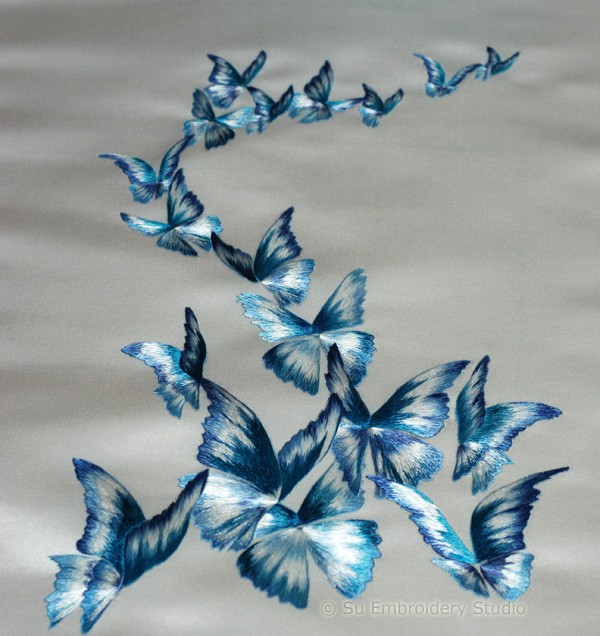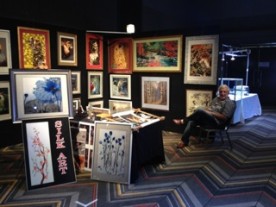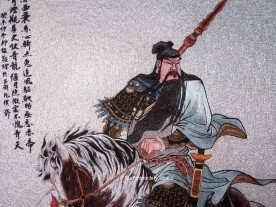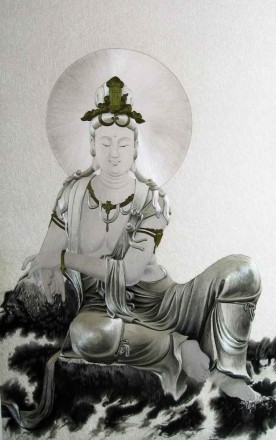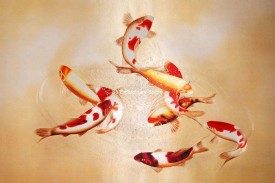Unraveling the Artistry of Hand Embroidery
Embroidery, though often overlooked, is a ubiquitous part of our lives. Whether it graces the hems of royal robes in Ancient Egypt, adorns tapestries from the Middle Ages, or embellishes the samplers of Colonial and Victorian-era ladies, embroidery has been an enduring expression of human creativity. While today's world witnesses the advent of machine embroidery, the age-old craft of hand embroidery continues to captivate hearts and adorn countless items with its intricate beauty.
A Tapestry of Time
Hand embroidery, in its myriad forms, boasts a lineage that stretches back thousands of years. Its ancient origins include adorning royal attire in Egypt, depicting tales in medieval tapestries, and serving as a canvas for ladies' samplers throughout history. Remarkably, it remains a vibrant and respected art form in the modern era. As it transcends time, hand embroidery embellishes wall hangings, pillowcases, quilts, and table runners, adding an exquisite touch of artistry to everyday items.
Buy Chinese Silk Embroidery Online
Distinguishing Hand Embroidery
Hand embroidery stands apart from its close relative, counted cross stitch, through its diverse range of stitches, each contributing to texture and visual intrigue. Counted cross stitch, on the other hand, relies primarily on a single stitch, leveraging color and shading for its textured effect. In counted cross stitch, artists follow a pattern displayed as a grid of X's, diligently stitching accordingly. In contrast, hand embroidery designs may either be stamped or drawn on the fabric or created entirely freehand. The essential tools for hand embroidery include embroidery floss and a specialized embroidery needle, characterized by its slightly larger eye and sharp point.
The Artistry of Five Stitches: Mastering the Foundations of Hand Embroidery
In the intricate world of hand embroidery, mastery begins with the foundational stitches, each offering a unique avenue for artistic expression. These five essential stitches lay the groundwork for creating captivating and visually appealing embroidery pieces:
Outline Stitch: The outline stitch, often referred to as the "backstitch," is one of the most basic yet versatile stitches in hand embroidery. It derives its name from its primary function: outlining a design or pattern. To execute this stitch, bring the needle up through the fabric at the starting point and then insert it back down slightly ahead, creating a continuous line of stitches. The result is a clean and precise border that defines the contours of the embroidered elements.
Satin Stitch: The satin stitch is a staple for adding rich, smooth, and glossy surfaces to your embroidery. This stitch involves filling open spaces within a design with closely spaced, parallel stitches. By carefully aligning each stitch, the embroiderer can achieve a surface that mimics the luxurious sheen of satin fabric. Achieving a flawless satin stitch requires meticulous attention to stitch direction and tension, ensuring a seamless, even finish.
Lazy Daisy Stitch: This whimsical-sounding stitch is perfect for crafting delicate, petal-like shapes, leaves, and other small embellishments in floral designs. The lazy daisy stitch creates a charming, teardrop-shaped loop by anchoring the thread with a single small stitch. This looped effect imparts a sense of movement and grace to your embroidery, making it a popular choice for accentuating natural elements in designs.
Custom Portrait Embroidery from Photo
Cross Stitch: The cross stitch, denoted by the familiar X-shaped pattern, is an iconic embroidery technique recognized worldwide. It's a fundamental stitch for filling open areas within a design or creating intricate patterns. Cross stitches can vary in size and density, allowing for versatility in achieving different textures and visual effects. By altering the number of strands of embroidery floss and the spacing of the stitches, embroiderers can manipulate the cross stitch to produce unique and captivating results.
French Knot: The French knot is a miniature marvel of hand embroidery, ideal for adding small, textured details such as eyes, flower centers, or scattered accents. Creating a French knot involves wrapping the embroidery thread around the needle's tip multiple times before carefully inserting it back into the fabric. The result is a tiny, raised knot that adds depth and dimension to your embroidery. While it may seem challenging to master initially, practice will lead to achieving consistent and precisely sized knots.
These foundational stitches serve as the cornerstone of hand embroidery, and while they represent the basics, their versatility knows no bounds. As you become more proficient in their execution, you'll discover the ability to adapt and combine these stitches, opening up a vast array of creative possibilities. Hand embroidery, like any art form, thrives on experimentation and innovation.
Advanced embroiderers often incorporate variations, shading techniques, and the use of diverse threads to elevate their work to new heights. The magic of hand embroidery lies not only in the mastery of these stitches but also in the artist's ability to infuse them with individual creativity, breathing life into each design and telling a unique story through every carefully placed stitch.
For beginners, it's advisable to commence with small projects primarily employing outline, cross, and lazy daisy stitches, as these are the easiest to master. While satin stitch adds luxurious texture to embroidery, it can be challenging for novices, requiring patience and practice to achieve a smooth, flawless finish.
Numerous resources are available for those looking to delve into hand embroidery. Craft books dedicated to needlework offer comprehensive guidance on the five basic stitches, along with more advanced techniques. Community education classes and online tutorials further facilitate the learning process. Craft stores offer an array of embroidery kits, catering to all skill levels, making it accessible to enthusiasts of all backgrounds.
In conclusion, hand embroidery is a captivating art form that transcends time and skill levels. It weaves threads of creativity into the fabric of everyday life, preserving tradition while leaving room for contemporary expression. Embracing the beauty of hand embroidery is not just about crafting stunning designs but also about upholding a cherished tradition that continues to inspire generations of artisans. So, whether you are a novice or an experienced embroiderer, the enchanting world of hand embroidery invites you to pick up a needle, thread, and fabric, and embark on your own artistic journey.
by Su Embroidery Studio (SES), Suzhou China
SES is dedicated to Chinese Silk Embroidery Art and High-End Custom Embroidery
Find SES's embroidery work at Chinese Silk Embroidery for Sale.


